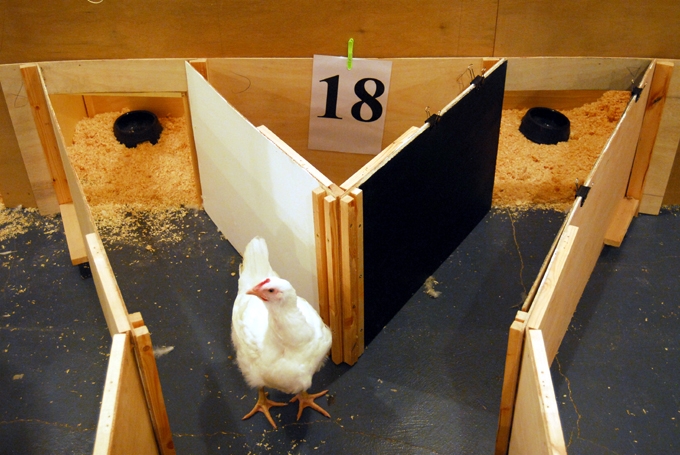Animals, just like humans, show behaviors. If you just see a picture without a context it's hard to say what is happening - or why. For example you might see an image of a horse running.
If you can monitor the animal for a while and see it's surroundings, you might be able to deduce what it is doing. A film could show the horse running, and a dog running after it. Looking more closely at the body language of the horse and the dog we can deduce if they're playing or there's a real chase taking place.
Now we know what is happening, but we still don't know why.
A Nobel-winning researcher Nikolaas Tinberger has formulated four questions to ask to find out why an animal is showing a specific behavior. These four requirements and their corresponding questions are
- Cause: What controls the behavior?
- Development: How and when is the behavior acquired in the animal's lifetime?
- Evolution: Why the species carry on doing this behavior?
- Function: How does the behavior contribute to the animal's survival and reproduction?
A cause is something that motivates the animal to spend time and energy to perform a behavior. It could be an internal or external stimulus. In our example the horse was running. For example,it might have seen a predator (visual stimulus) which caused a fight-or-flight -response.
Development explains how the behavior is acquired and how it changes. Newborn calves will seek an angle similar to the cow's hind legs and flank to find the udder. When they grow older, this behavior is lost. A behavior could also be learned, like a dog who learns that they get petted when they jump on the owner's lap.
For our example, let's assume that the horse saw a dog. The horse then escaped following it's natural instinct. Had it learned that this particular dog is friendly, this behavior would not have occurred. Development can alter a behavior, or cause differences in how individuals express that behavior.
Evolution looks at how the behavior impacts the species. Wolves live in packs, because hunting together improves their chances of success and ensuring enough food for adults and pups. The ancestors of horses who ran from predators were more successful in raising their descendants to adulthood. This ensured that the behavior stayed with the species.
Function asks about why the behavior keeps occurring in the species. Suckling, play-fighting and mating are behaviors that survive in the species and directly impact the survival of the individual showing the behavior. Note that trained behaviors don't survive from one animal to another: they're learned. When a horse runs from a predator, the function is to escape from a threat and to survive.
For example, let's look at the behavior of a cow picking up shredded silage. We can assume that the cow is eating. How can we answer the four questions?
Cause: Hormonal signals create the feeling of hunger, when the intestines are getting empty. The cow sees others eating, which can promote eating behavior also in animals who are not hungry.
Development: As a calf, the animal suckles their dam for milk. As their metabolism develops and solid food is offered, the animals learns to eat also silage, hay and similar solid feeds. Their rumen and intestines develop a bacterial flora capable of metabolizing the feed.
Evolution: Animals who ate high-quality grass were healthier and had better chances of raising their offspring into adulthood.
Function: To provide the animal's body with nutrients it needs to survive and to grow/produce milk.
For more information, enroll to the free Animal Behavior and Welfare -course on Coursera.







